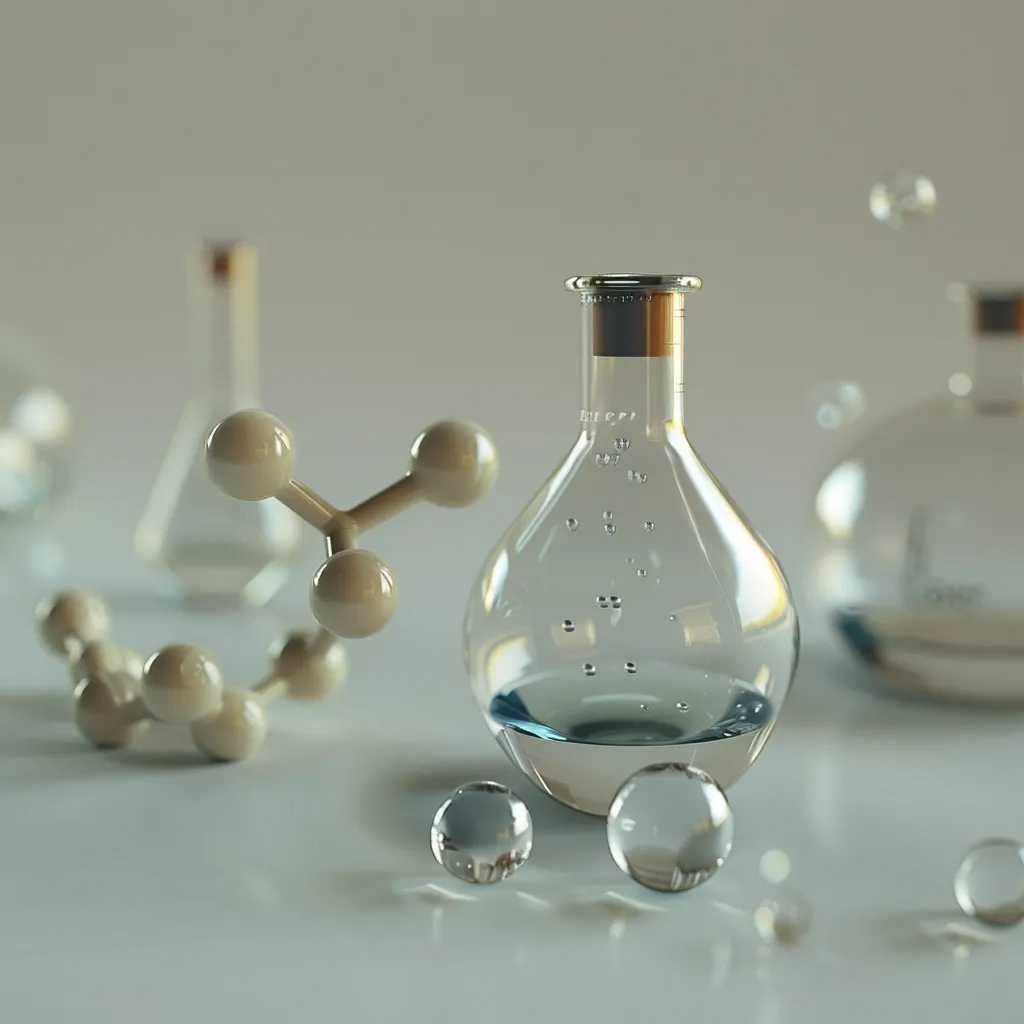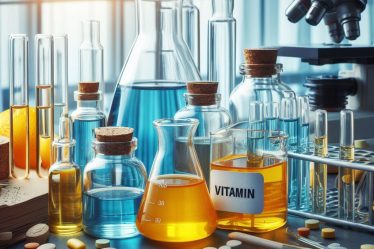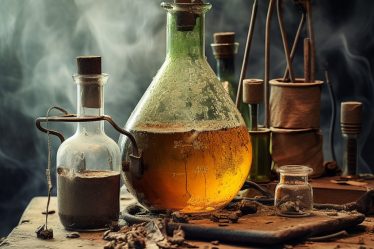
Esters are everywhere—from the fruity aroma of bananas to the chemical structure of everyday plastics.
As part of organic chemistry, esters form through simple reactions between acids and alcohols, making them key compounds in labs and everyday products. Our study guide will explore ester structure, esterification, key reactions, ester bonds, and how to name esters through practical examples.
Ester and Esterification: Quick Summary
Do you just need the basics? Here’s a simple explanation of what is an ester:
🟠 Esters are organic compounds formed when a carboxylic acid reacts with an alcohol, creating a unique ester bond.
🟠 Ester bond is a chemical link between the acid and alcohol parts, represented as $RCOOR’$, giving esters their distinct structure.
🟠 Esterification is the reaction that forms esters, commonly catalyzed by acids like sulfuric acid.
🟠 Hydrolysis breaks esters into an acid and alcohol by adding water, while saponification produces soap from fats or oils in a basic solution.
🟠 Physical properties of esters include moderate boiling points, slight water solubility, and often a pleasant, fruity aroma.
Struggling with esterification and naming esters? Don’t worry. A tutor can explain it in a way that clicks for you. You can also find more useful topics in our Chemistry blogs.
What is an Ester?
Esters are organic compounds made when an acid, usually a carboxylic acid, reacts with an alcohol in a process called esterification.
In esterification, the hydrogen in the acid’s hydroxyl group ($-OH$) is replaced by an alkyl or aryl group from the alcohol, forming an ester bond ($RCOOR’$) that links the two parts into one molecule. Many esters have distinct scents commonly found in fruits and flowers, like isopentyl acetate in bananas.
Esters come from different types of acids, leading to varied uses. Those made from carboxylic acids are often found in nature, while esters from inorganic acids, like sulfuric acid, have specific industrial uses.
Esters can also undergo hydrolysis, a reaction where water breaks the ester bond, returning the original acid and alcohol and reversing esterification.
The Structure of Esters
The structure of an ester is represented as $RCOOR’$, with $R$ from the acid and $R’$ from the alcohol.
For example, in methyl acetate ($CH_3COOCH_3$), the $CH_3COO$ part comes from acetic acid and the $CH_3$ from methanol.
Esters have a carbonyl group ($C=O$) next to an oxygen atom linked to the $R’$ group, giving them moderate polarity and, often, a fruity or pleasant aroma.
Main Characteristics of Ester Structure
- Ester contains a carbonyl group ($C=O$) next to an $OR’$ group.
- Ester formula: $RCOOR’$ where $R$ is from the acid and $R’$ is from the alcohol.
- Because esters lack hydrogen-bond donors, they are volatile and fragrant.
Esterification: How Esters are Formed
Esterification is when a carboxylic acid reacts with an alcohol to form an ester and water. This reaction is commonly catalyzed by an acid, with sulfuric acid often used to speed up the process and remove water, helping to shift the equilibrium toward ester formation.
One widely studied example of this reaction is Fischer esterification, where the hydroxyl group ($-OH$) of the acid combines with the hydrogen ($H$) of the alcohol to release water.
To increase the yield of esters, conditions like excess alcohol or dehydrating agents are applied. Excess alcohol ensures a higher concentration of reactants, pushing the reaction toward ester production. Dehydrating agents, such as sulfuric acid, not only catalyze the reaction but also remove water as it forms, helping to drive the reaction forward.
The specific ester produced in this reaction depends on the acid and alcohol involved. For example, when acetic acid reacts with ethanol, ethyl acetate is formed, a common ester with industrial and laboratory applications.
Common Esterification Reactions with Examples
| Carboxylic Acid | Alcohol | Ester Formed | Reaction |
| Acetic acid (CH₃COOH) | Ethanol (C₂H₅OH) | Ethyl acetate (CH₃COOC₂H₅) | CH₃COOH + C₂H₅OH → CH₃COOC₂H₅ + H₂O |
| Benzoic acid (C₆H₅COOH) | Methanol (CH₃OH) | Methyl benzoate (C₆H₅COOCH₃) | C₆H₅COOH + CH₃OH → C₆H₅COOCH₃ + H₂O |
| Propanoic acid (C₂H₅COOH) | Butanol (C₄H₉OH) | Butyl propanoate (C₂H₅COOC₄H₉) | C₂H₅COOH + C₄H₉OH → C₂H₅COOC₄H₉ + H₂O |
Naming Esters and Common Examples
Naming esters follows a systematic approach set by IUPAC, which combines the names of the parent acid and alcohol.
Esters are named with two parts: the first part comes from the alcohol (with an “-yl” ending) and the second part from the acid (changing the acid’s suffix to “-ate”). For example, ethyl acetate comes from ethanol and acetic acid.
The acid component contributes names like acetate (from acetic acid), propionate (from propionic acid), and butyrate (from butyric acid). This naming pattern helps to quickly identify the original acid and alcohol used in forming the ester.
Esters are commonly found in nature and everyday items. For instance, ethyl acetate is used as a solvent in nail polish remover, and methyl salicylate (from methanol and salicylic acid) is a fragrant ester used in wintergreen oil for flavoring.
Naming Rules for Esters
1. Identify the Alcohol: Take the alcohol part of the ester and change its name to end with “-yl.” For instance, if the alcohol is methanol, it becomes “methyl”; if ethanol, it becomes “ethyl.”
2. Identify the Acid: Find the carboxylic acid part and replace the “-ic” ending with “-ate.” For example, acetic acid becomes “acetate,” and propionic acid becomes “propionate.”
3. Combine the Parts: Place the modified alcohol name first, followed by the modified acid name. For instance, an ester from methanol and acetic acid is “methyl acetate.”
Naming Esters: Examples
Here are some examples of common esters and how they are named according to the IUPAC system:
Methyl Acetate – $CH_3COOCH_3$
- Alcohol: Methanol
- Acid: Acetic acid
- Ester Name: Methyl acetate
Ethyl Propanoate – $C_2H_5COOC_2H_5$
- Alcohol: Ethanol
- Acid: Propanoic acid
- Ester Name: Ethyl propanoate
Butyl Butyrate – $C_3H_7COOC_4H_9$
- Alcohol: Butanol
- Acid: Butyric acid
- Ester Name: Butyl butyrate
Isopropyl Formate – $HCOOCH(CH_3)_2$
- Alcohol: Isopropanol
- Acid: Formic acid
- Ester Name: Isopropyl formate
Reactions Involving Esters
Esters undergo three important reactions: hydrolysis, saponification, and transesterification. Each reaction changes the ester structure, creating new compounds with various applications in daily life and industry.
Hydrolysis breaks down esters by adding water. This reaction can be acid-catalyzed or base-catalyzed. In acid-catalyzed hydrolysis, the ester reacts with water, producing an alcohol and an acid in a balanced reaction that can reverse itself. Base-catalyzed hydrolysis, or saponification, is different because it forms a stable salt that doesn’t reverse. You’ll see hydrolysis in many biological and chemical processes, as it’s essential in breaking down compounds.
Saponification happens when esters react with a strong base, such as sodium hydroxide, to form soap and glycerol. In this reaction, the ester bond breaks, producing a carboxylate salt (the soap) and an alcohol. This is the basic principle of soap-making: fats and oils react with lye to form soap that cleans by dissolving in water and oil. Saponification is widely used in making soaps and detergents, transforming oils into products we use daily.
Transesterification is the process of exchanging the alcohol in an ester for a different alcohol. This reaction is essential in biodiesel production, where vegetable oils or animal fats are transformed into biodiesel and glycerol. The transesterification reaction converts triglycerides, esters found in oils, into methyl or ethyl esters (biodiesel) and glycerol as a byproduct. Biodiesel burns cleaner than regular diesel, offering an alternative energy source. Transesterification is also used to create certain plastics and resins, making it a valuable industrial process.
1. Hydrolysis of Esters
Hydrolysis splits an ester back into its original alcohol and acid by adding water. In acid-catalyzed hydrolysis, the reaction is reversible and produces an alcohol and acid. In base-catalyzed hydrolysis (saponification), the reaction is irreversible because it forms a stable salt instead of an acid.
Key Steps in Hydrolysis Reaction
1. Acid Hydrolysis: Ester + Water → Acid + Alcohol (Reversible)
2. Base Hydrolysis (Saponification): Ester + Base → Carboxylate Salt + Alcohol (Irreversible)
2. Saponification: The Role of Esters in Soap Making
Saponification occurs when esters in fats or oils react with a strong base, like sodium hydroxide, to produce soap and alcohol. In this reaction, the ester breaks down to form a carboxylate salt (soap) and an alcohol (usually glycerol). Soap molecules have two ends, one that attracts water and one that attracts oils, making them effective for cleaning. Saponification is essential in the soap industry, where this reaction turns fats and oils into solid and liquid soaps that are effective at dissolving dirt and grease.
3. Transesterification
Transesterification changes one ester into another by replacing its alcohol component. This reaction involves adding a new alcohol, which replaces the existing one in the ester.
Transesterification is used in biodiesel production, where oils from plants or animals are transformed into biodiesel and glycerol. In this process, oil triglycerides react with methanol or ethanol, producing methyl or ethyl esters (biodiesel) and glycerol as a byproduct.
Biodiesel burns cleaner than traditional fossil fuels and is renewable, making transesterification an important process in sustainable energy. Besides fuel, transesterification is also used in making certain resins and plastics, where exchanging ester groups gives the final product the desired characteristics.
Physical Properties of Esters
Ester boiling points are generally lower than carboxylic acids of similar size due to the lack of hydrogen bonding between ester molecules. However, esters are polar because of their carbonyl group ($C=O$), which gives them moderate boiling points compared to nonpolar compounds like alkanes.
Esters are only slightly soluble in water. While they can form hydrogen bonds with water, they don’t form hydrogen bonds with each other, limiting their water solubility. Small esters, like ethyl acetate, dissolve better in water, but as the carbon chain length increases, their solubility decreases.
Many esters are volatile and fragrant, especially those with low molecular weights. Due to their pleasant aromas, these esters are responsible for the scents in fruits and flowers and are used in flavoring and fragrance industries.
Physical Properties of Common Esters
| Ester | Boiling Point (°C) | Solubility in Water (g per 100 mL) | Notable Characteristics |
| Methyl acetate | 57 | 24 | Volatile with a mild fruity odor |
| Ethyl acetate | 77 | 8.7 | Used as a solvent, fruity aroma |
| Propyl acetate | 102 | 1.7 | Pear-like scent, solvent in paints |
| Butyl acetate | 126 | 0.7 | Pleasant odor, used in lacquers |
| Methyl butyrate | 102 | 2.4 | Pineapple scent, used in flavors |
| Ethyl butyrate | 121 | 1.5 | Fruity scent, flavor additive |
Advance Your Knowledge in Esters
Are esters tricky for you? A qualified chemistry instructor can explain complex topics in a way that makes sense to you, making organic and inorganic chemistry understandable and enjoyable.
Search for a tutor using phrases like “chemistry tutor Edinburgh” or “chemistry teacher Liverpool” on platforms like meet’n’learn. You’ll find someone who can tailor lessons to your needs.
If you prefer learning in a group, search for “chemistry classes Leeds” or “chemistry lessons London” online. The search will lead you to chemistry tutoring nearby.
Ester: Frequently Asked Questions
1. What is an ester?
An ester is an organic compound formed from a reaction between a carboxylic acid and an alcohol, creating an ester bond.
2. How are esters formed?
Esters form through esterification, a reaction where an acid combines with an alcohol, usually catalyzed by an acid.
3. What are the common uses of esters?
Esters are widely used in fragrances, flavorings, solvents, and biodiesel production.
4. What is esterification?
Esterification is a reaction where a carboxylic acid and an alcohol combine to create an ester and water.
5. How are esters named?
Esters are named by combining the alcohol name with “-yl” and the acid name with “-ate,” like “methyl acetate.”
6. What is hydrolysis of esters?
Hydrolysis of esters is a reaction that splits an ester into an acid and an alcohol by adding water.
7. What does saponification mean?
Saponification is the base-catalyzed reaction of esters in fats and oils to produce soap and glycerol.
8. Why do esters have fruity scents?
Due to their molecular structure, many esters have a pleasant, fruity aroma, making them common in the flavor and fragrance industries.
Sources:
1. Wikipedia
2. Britannica
3. LibreTexts Chemistry



